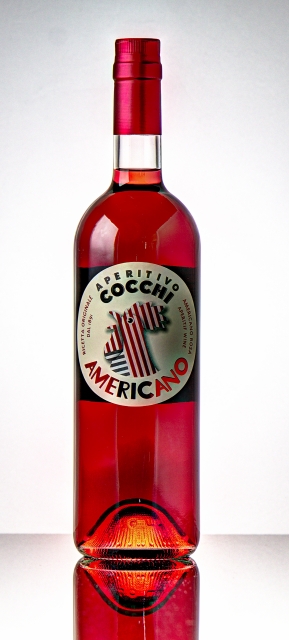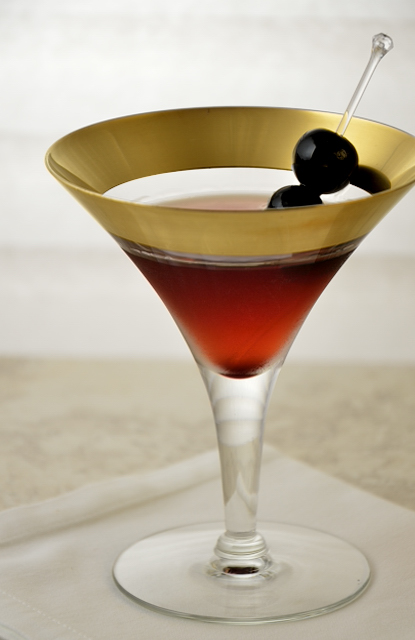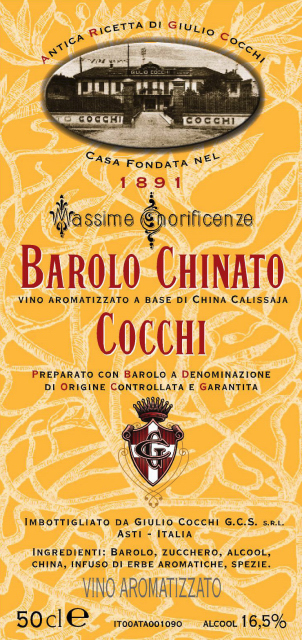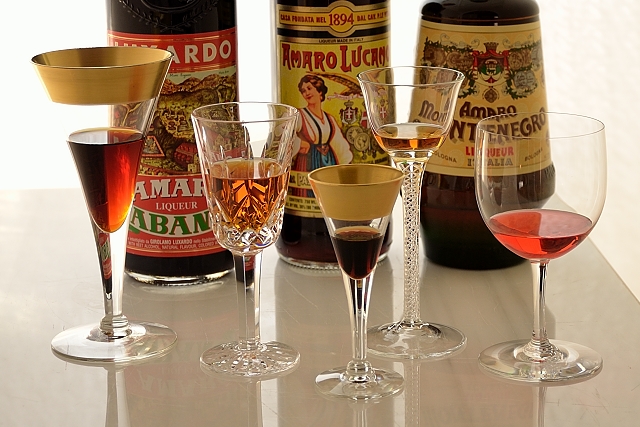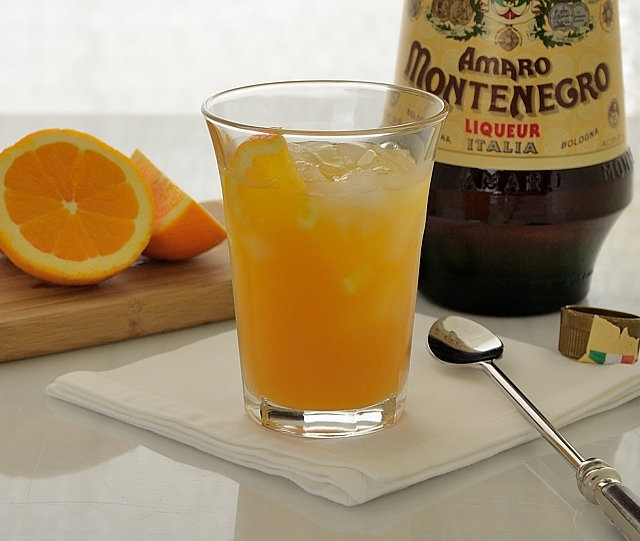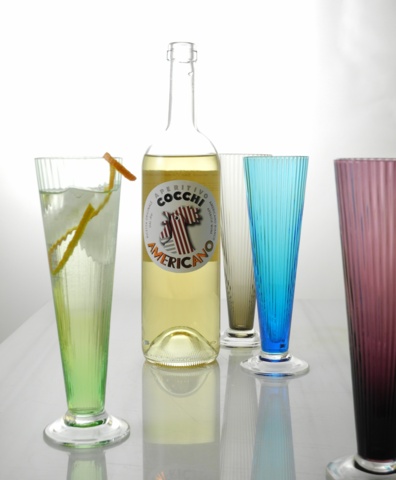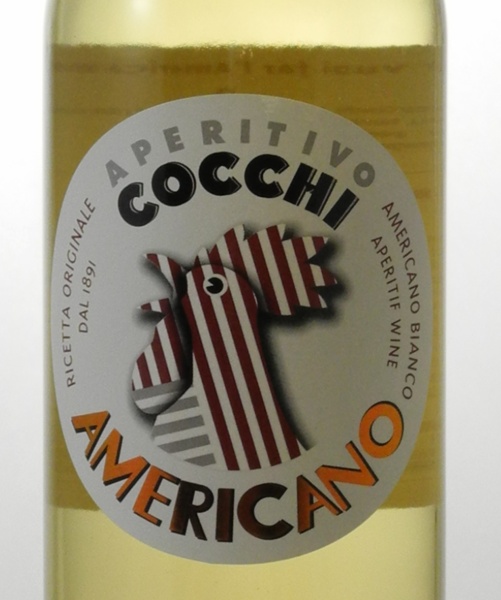Topic Index
The font size for a topic word is sized by the number of articles that reference that topic. The more articles the bigger the font.
Click on a word to search for posts with that topic. This page will reload with the search results.
Cocchi Americano Rosa
One of my favorite Italian aperitif wines is back, and this time she’s in red. Meet Cocchi Americano Rosa.
You might remember my earlier post on the classic Cocchi Americano Bianco, an aperitif wine made from Moscato d’Asti. Over its more than one hundred year history The House of Cocchi has occasionally produced variations on that classic theme. Cocchi Americano Rosa, made of naturally aromatic red varietals from Piemonte is their newest.
There aren’t many bottles here in the U.S. right now, but that will soon change as it becomes available on the world market – a launch Cocchi has planned for June of this year. Good thing too, because that means Cocchi Rosa will arrive in time for summer. Its notes of white roses, cherries and summer berries are masterfully blended with citrus, herbs, fruit and spices. Make no mistake though, this is no “girlie drink.” The luxurious mouthfeel, earthy vegetal notes of gentian and cinchona complement the fruit, floral and spice notes. A distinct peppery warmth of pink grapefruit lends a complexity that will keep you sipping and sipping.
If you are curious about “bitters,” but find that even Aperol is too much for you, try this. The bitter element while present, leans toward the subtle, just enough to balance the sweetness and fruit of the wine.
Cocchi recommends serving this over ice with soda and a lemon wheel or mixed with Prosecco to start. From there I suggest you experiment with other aperitivi such Aperol and Campari or spirits such as vodka, gin, grappa, Acqua di cedro, or my favorite, Solerno, a Sicilian blood orange and lemon liquor. No doubt about it, this will be the go to drink in our home in the warm summer months to come. In case you were wondering about that garnet color you see, it is 100% natural. Read the remainder of this entry »
Barolo Chinato – A Nectar for Winter
Barolo with Benefits
I am tempted to tell you to stop reading now and go out and buy this and taste for yourself. But I really want to share my thoughts with you. Maybe you could take a friend or a kid or a neighbor with you in the car, and your passenger could read this to you on the way to the liquor store. That would be a good idea.
From Italy’s Piemonte region, the Foot of the Mountain, comes some of the world’s most magnificent food – truffles and spectacular mushrooms, to name but two, and the wines of The House of Cocchi. My regular readers will recall my articles about Cocchi Americano and Vermouth, two of their vini aromatizzati. But Cocchi has a third aromatized wine, Barolo Chinato (key-NOT-o.) Long favored as a treatment for lung ailments, flu, headaches and as a digestivo, the old folks know and love it. Barolo Chinato has warmed and soothed body and soul for well over a hundred years.
There is some dispute as to who invented Barolo Chinato with both Giuseppe Capellano and Giulio Cocchi claiming bragging rights. Giulio Cocchi invented his Barolo Chinato in 1891, and it soon became popular in Italy and Europe. The late 19th century had already seen much experimentation in the development of fortified wines and labels everywhere read “alcool, zucchero, china, infuso di erbe aromatiche, spezie.” The House of Cocchi is now owned by the Bava family and Barolo Chinato is still made according to Giulio Cocchi’s original secret recipe.
Barolo Chinato begins with DOCG (Denominazione di Origine Controllata e Garantita) Barolo, the king of wines. What sets this apart from any other Barolo is an infusion of chinchona (China Calissaja bark – that’s the chinato part) along with herbs and spices. After almost a year’s maceration, it emerges garnet red from its casks, ready for consumption, a true vino aromatizzato, a revelation kissed with bitters. Whether you drink it at room temperature, warmed or with a chill on it, I can guarantee you will be seduced.
Now please, wine geeks, don’t get all over me about the add-ins to the Barolo. I hear you already. This is not like the time you poured your dad’s Chateau Lafite into the punch at the Frat house. Not even close. As intoxicating as the nose is, the drinking will educe more than you would think possible. This is a complex delectation, viscous, sweet and aromatic, filled with a rich warmth and the taste of orange peel, cherries and raisins, cardamom, rhubarb and gentian along with warming spices – cloves, star anise, ginger and cinnamon. But you do not taste this all at once – bitter and sweet alternate, and flavors, either one by one or in astonishing harmony, come to the fore and retreat making the wine seem almost alive. With a mildly bitter and lingering finish, Barolo Chinato is elegance in a bottle. Read the remainder of this entry »
‘Tis the season to overindulge or pazza per amaro
To know life one must taste the bitter and the sweet. – Italian proverb
Holiday Season is upon us, and along with the warmth, joy and feelings of brotherly love come huge feasts, and with the feasts, overindulgence. The Italians know how to cure that feeling of having overdone it at the table, and that cure comes in a bottle filled with liquors known as amari (singular, amaro). An essential part of the Italian gustatory experience, these eupeptics have yet to catch on in America. Amaro means bitter, and is not to be confused with Amaretto, the little bitter almond liqueur, nor with Amarone, the magnificent red wine from Italy’s Veneto region. No, amari are in a class by themselves. A large class of liquor numbering in the hundreds, there are even subsets divided by style. Amaro’s origins date back to at least 300 B.C. Originally tonics or elixirs, by medieval times they were integral to alchemists in their attempts to produce gold. It was a no go for the gold, but the elixirs, with their restorative nature and curative powers remain with us to this day. The recipes are always secret, proprietary and closely held by the Italian producers. As digestivi they are traditionally served neat (undiluted, at room temperature), or gently heated on occasion, in the cold winter months. These remarkably complex libations stimulate the appetite and promote the production of digestive acids and enzymes; as the Italians say, they open up the stomach – not exactly dinner table conversation, but digestion is a very big deal to the Italians.
I have already introduced you to Cocchi Americano, Aperol and Campari, all liquors with a distinctly bitter edge. But now we are moving up to the bitter big leagues, and like I said, just in time. Amari are distilled from neutral spirits or wine, even grappa, macerated on an array of ingredients – everything from citrus peel, to the roots of Alpine Yellow Gentian and the bark of the Cinchona tree. Also used are herbs, such as lemon balm and rosemary, spices such as cinnamon and cardamom and even artichokes. Yes, artichokes. Stroll with me into the world of amaro.
My beginning with amaro was less than auspicious. Much less. I was just a little kid, and we were at a big family weekend dinner. After dinner, with everyone well sated, and settling quietly back, Uncle Arunze brought out a bottle filled with brown liquid. He held it up and gestured, offering it to anyone who wished to imbibe. No one moved. No one spoke, lest gesture or utterance be misinterpreted. No one but me, the inquisitive little kid. The adults smiled, and Uncle Arunze poured the tiniest bit of the syrupy brown liquid into a small glass. I swallowed it. All at once. What a jolt. Inauspicious alright. Everyone had quite a laugh at my expense. The bitter alcoholic kick almost knocked me out of my chair. The intensely sugary grasp of the American sweet tooth is not to be underestimated, thus for many these bitter libations can be a very hard sell. Love of amari is learned and cultivated. These are full-bodied creations with flavor nuances that would make a wine nerd wax poetic.
Most range in price from about twenty to thirty dollars, although some such as Amaro Nonino command even higher prices. Many of the bottles and labels are works of art themselves, sleek creations with beautiful gilt script, colorful design, and labels that harken back to produce crates of old.
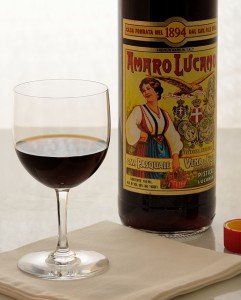
From Basilicata (also known as Lucania) comes Amaro Lucano. The brightly festive label features a pacchiana in traditional dress (farmer in the Campanian dialect) with her basket of herbs and the motto lavoro e onesta (work and honesty). Made from 37 herbs, in the tasting are notes of ginger, licorice and cinnamon. Drink this neat or with sparkling water as an aperitivo. And yes, you can even pour a bit over ice cream.
Amaro Montenegro is the sweetest and perhaps the most accessible of the three shown here with its spice and notes of citrus peel, clove, tea and herbs. Its name honors Italy’s second Queen, Helena of Montenegro. Developed in Bologna in 1885 and popular ever since, it is one of Italy’s best selling amari. Drink it neat as a digestivo, or mixed with sparkling water or ginger ale for a delightful aperitivo.
Amaro Abano, my current favorite, is made with herbs that grow wild in the volcanic hills south of Padova. Sipped slowly after a grand meal, she reveals herself. Initially sweet, followed by the warmth of cinnamon and black pepper, she fills your mouth with cardamom, bitter orange peel and the most remarkable tobacco finish. This is one complex creation. And as with Amaro Montenegro, mixed with sparkling water or ginger ale, this makes one fine aperitivo.
Somehow, when consumed neat on the novitiate’s empty stomach, the bitterness of these elixirs predominates, diminishing the drinking experience. I suggest you taste them on a full stomach. Additionally, their alcoholic content ranges from 16% to 40% and higher, and is nothing to sneeze at. As a beginning taster, with your first sip you may discern only bitter, or distinctly separate bitter and sweet. Sip again and the amaro will seduce you as you begin to taste the multiple part harmony of spice, herbs and fruit. The bitterness will remain a constant, taking its part as a pedal point.
When next you entertain guests with a grand and leisurely meal, consider a selection of amari to close your evening. Bring a few bottles to the table, and sip slowly to savor the delights within. Chances are it will be a new experience for many of your guests, and perhaps you will make a few converts. Bring a bottle of sparkling water along, or a pot of warm water, just in case your guests wish to ease the transition from newbie to convert. Watch as after just a bit, they push the water aside. Slowly sipping these complex libations will quickly become a treasured part of your meals – a time to sit back, reflect on the joy around you and count your blessings while enjoying the good will of your company. Enjoy the wonder that is the art of the distiller of amaro.
Next time you need some of the hair of the dog that bit you, try this instead of a Bloody Mary.
Amaro Montenegro and Fresh Orange Juice
serves 1
1 ounce Amaro Montenegro
2 ounces freshly squeezed orange juice
orange slice for garnish
Pour Amaro Montenegro over crushed ice. Add orange juice and stir with a bar spoon. Garnish with an orange slice. Serve at once.
And for the James Bond fans, just imagine ordering this one – “1 measure of Amaro Montenegro, 2 of fresh orange juice, over crushed ice. Then add a thin slice of orange.”
Bevi responsabilmente!
Note: You can click on any picture for a larger image, and to see a slide show!
I have no affiliation with any product, manufacturer, or site mentioned in this article.
Cocchi Americano – Prendiamo un aperitivo
 Meet the It Girl
Meet the It Girl
With easy Piemontese elegance she will open your palate and please you. Derived from Moscato d’Asti, Cocchi (COKE-ey) Americano has been around since 1891, around Italia anyway, but she hit the U.S in a Bordeaux style bottle about a year ago, and she has made a splash. This aperitivo alcolici opens with an almost syrupy taste of caramelized orange peel and finishes in a distinctly adult fashion with the bitter taste of cinchona bark. In between come aromatics and spice – a seductive blend reminiscent of cinnamon and star anise.
Ask aperitivo devotees about it, and they will first wax poetic as they speak of the long gone Kina Lillet. Their faces brighten as they turn to Cocchi Americano. Kina Lillet devotees are so pleased with Cocchi Americano, they have found it a most suitable replacement in cocktails that were originally made with their late lamented Kina Lillet. What James Bond fan could forget the Vesper from Casino Royale? Weep no more. The It Girl is here.
Per fare l’Americano
When Italians mix this with anything, it is sparkling water. Standard proportions are equal parts Cocchi Americano and sparkling water over ice. For a boost try 2 to 1 Cocchi Americano to sparkling water. In our house Bart likes equal parts, while I go for a milder version – 1 part Cocchi Americano to 3 parts sparkling water. It is up to you. It’s your drink, after all. Finish it with an orange twist or slice. You can’t go wrong – start with equal parts and see where your taste buds take you. For an extra bitter kick, add a dash of Aperol. Summer’s on the way. Grab a bottle, perfect your proportions (I’m talking about the drink, not you) and dazzle your guests when you host an early evening Aperitivo get together.
Bottles run from $18.00 to $20.00. Depending on where you live, Cocchi Americano may be a bit elusive. It is available from K&L Wine Merchants in Hollywood, California.
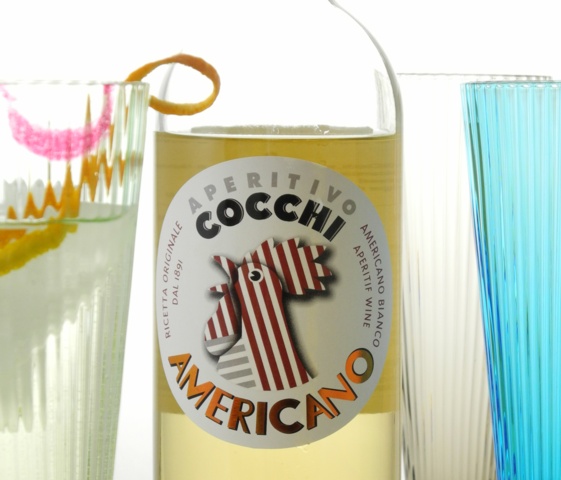
Note: You can click on any picture to see a slide show with even more pictures!
I have no affiliation with any product, manufacturer, or site mentioned in this article.

